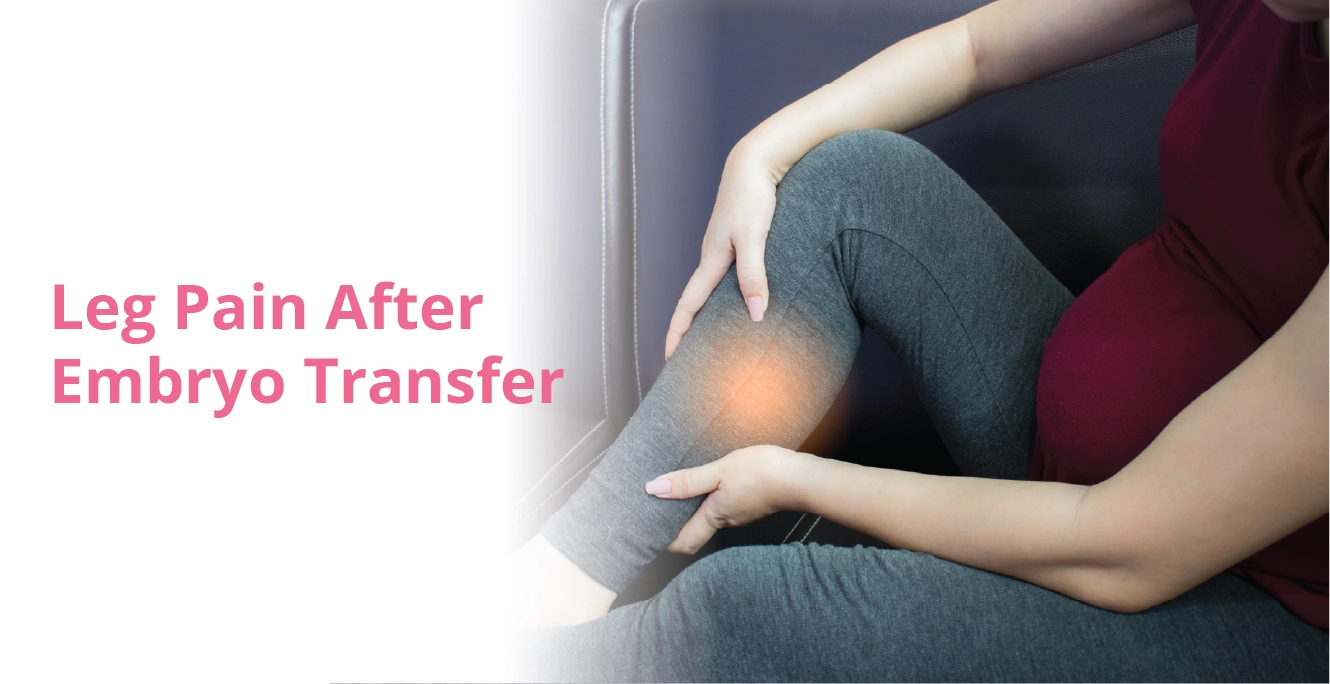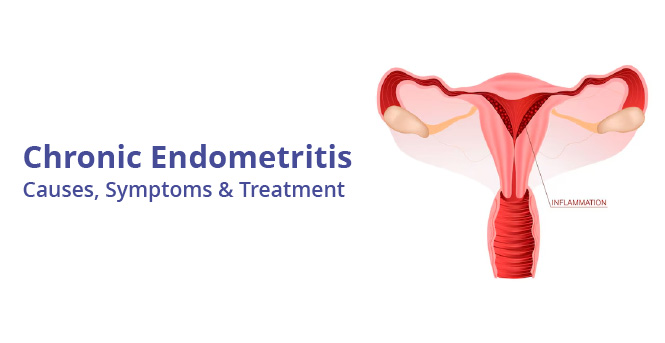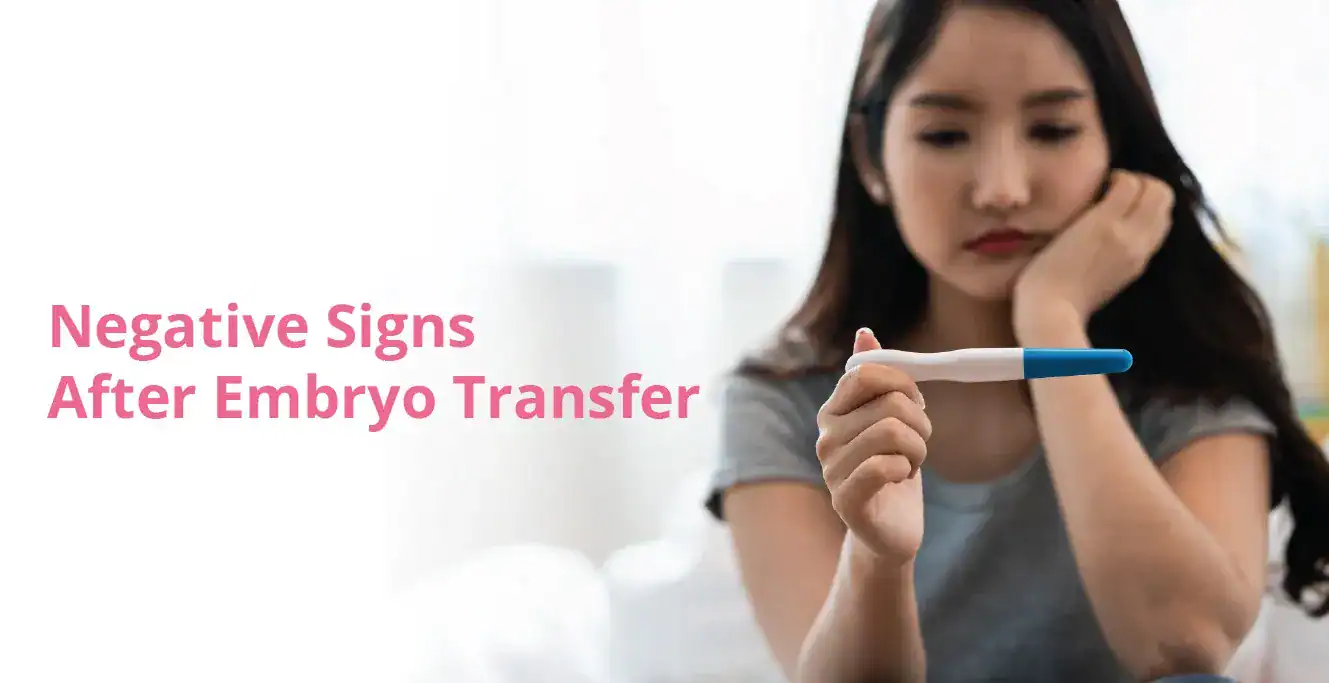
Thin Endometrium: Causes, Symptoms, Diagnosis, and Treatments

Table of Contents
- Quick Highlights
- What is Thin Endometrium?
- Measurements of the Endometrium Layer:
- Who Can Get Thin Endometrium
- How Thin Endometrium Affects Fertility
- Symptoms of Thin Endometrium:
- Causes of Thin Endometrium:
- Different Types of Thin Endometrium
- Diagnosis of Thin Endometrium:
- Treatment Options for Thin Endometrium:
- Conclusion
- FAQs:
Quick Highlights
- The thin endometrium is the tissue that lines your uterus’s inner layer. The inner layer is essential for reproduction as the embryo implants itself in this layer.
- During a menstrual cycle, your endometrial lining is constantly changing. So, for a pregnancy to be successful, the embryo must be implanted in your endometrial lining carefully and in the best possible condition.
- Once the embryo implantation has taken place, pregnancy advances, and the thick uterine lining’s functional glands provide the foetus with the nutrition it needs to grow.
- However, when your endometrium lining is less than 7 mm thick, it indicates a thin endometrium. It can cause problems with successful embryo implantation and further nourishment of the foetus. In other words, it can make carrying out a pregnancy difficult for you.
- In this blog, we will learn about the causes, symptoms, and treatments of thin endometrium in detail to give you a better understanding of the problem.
What is Thin Endometrium?
The tissue layer in the inner lining of the uterus is called the endometrium. The thickness of the endometrial layer keeps on changing during the menstrual cycle. The uterus is lined with 3 layers:
- The outer layer is called the serosa
- The middle layer is called the myometrium
- The third and innermost layer is called the endometrium.
When the endometrium layer gets abnormally thin, it can impact embryo implantation, causing difficulty in conception. The thickness of the endometrium layer in the uterus is essential for successful embryo implantation and to achieve a healthy pregnancy. This layer also protects the baby and nourishes it for further development.
The endometrial lining keeps changing throughout the menstrual cycle. For a successful pregnancy, the embryo should be implanted well in the endometrial lining, which is also in optimal condition. Oestrogen and progesterone are two sets of hormones that help prepare the thickness of the endometrial lining for pregnancy. If the endometrial lining is thinner than the standard and required thickness, it would be difficult for the woman to reach conception or hold the pregnancy for a full term. In addition, experts suggest that a thin endometrium often leads to complications like miscarriage.
Measurements of the Endometrium Layer:
According to the experts, the endometrium layer is classified into different phases based on their measurements. Refer to the below table for reference and a better understanding of the thickness of the layer:
| Phase in Menstrual Cycle | Thickness of Endometrium Layer |
| Menstrual Phase | 2 – 4 mm (Thin Endometrium) |
| Follicular Phase | 5 – 7 mm (Intermediate) |
| Luteal Phase | 11 mm (Thick Endometrium) |
| Ischemic Phase | 7 – 16 mm |
Who Can Get Thin Endometrium
Any woman can have a thin endometrium, but it’s more likely in some groups:
- Women with PCOS: Around 1 in 10 women of childbearing age with PCOS may have a thin endometrium.
- Older women: As women get older, the natural drop in oestrogen can up the chances of a thin endometrium.
- Women who’ve had uterine infections or surgeries: If you’ve had infections or procedures in your uterus, you’re at a higher risk.
How Thin Endometrium Affects Fertility
A thin endometrium can have a big impact on your ability to get pregnant and have a healthy baby:
- Harder for the embryo to implant: When the endometrium is thin, it can be tougher for the embryo to attach and start growing.
- Increased risk of miscarriage and other problems: Studies have found that women with a thin endometrium during IVF/ICSI cycles are more likely to have miscarriages and lower chances of a live birth.
- Uterine conditions: If there are other issues like scar tissue or uterine fibroids in the uterus, it can further complicate fertility by affecting blood flow and the health of the endometrium.
Symptoms of Thin Endometrium:
With thin endometrium, usually, you will not experience any symptoms, i.e., you may remain asymptomatic for a long time.
However, in case you experience symptoms, they can manifest in the following ways:
- Extremely painful menses
- Problems related to infertility
- Reduced bleeding when on periods
- Irregular or delayed menstrual cycle
Causes of Thin Endometrium:
There are numerous causes that can result in a thin endometrium, such as:
- Hormonal imbalances: When your body doesn’t make enough oestrogen, it can mess with the thickness of your endometrium. This can happen if you’re stressed, not eating right, or taking certain medications. Conditions like PCOS, where your body makes too much of male hormones, can also be a culprit.
- Getting older: As women age, they produce less oestrogen, which can thin out the endometrium.
- Poor blood flow: If your uterus isn’t getting enough blood, it can affect the endometrium. This can be caused by smoking, being overweight, high blood pressure, diabetes, and some birth control pills.
- Damage to the endometrial lining: If you’ve had infections in your uterus or surgeries like a D&C, it can leave scar tissue that makes the lining thinner. A condition called Asherman’s syndrome, where there’s scar tissue inside the uterus, can also be responsible.
- Growths in the uterus: Fibroids and adenomyosis, which are non-cancerous growths, can mess with the blood supply and overall health of the endometrium.
- Autoimmune diseases and infections: Some conditions, like endometrial tuberculosis and other infections, can interfere with the normal growth of the endometrium.
- Poor nutrition: If your diet is missing key nutrients, it can impact the health of your endometrium.
- Certain birth control pills: Some types of oral contraceptives can affect your hormone levels and thin out the endometrium.
Different Types of Thin Endometrium
There are two main types, depending on whether the issue has been present from the start or developed over time.
-
Primary thin endometrium: This is when the endometrial lining has always been thin. It’s often due to hormonal imbalances, medical conditions, or even genetics. Some women may have it from their first period, while others develop it due to underlying health issues.
-
Secondary thin endometrium: This happens when a once-normal endometrial lining becomes thin over time. Common causes include:
- Previous surgeries like dilation and curettage (D&C)
- Infections that cause scarring, such as chronic endometritis
- Long-term use of hormonal treatments or contraceptives
- Poor blood flow to the uterus, often linked to conditions like obesity or diabetes
Diagnosis of Thin Endometrium:
The expert will perform a physical examination to check the tenderness, swelling, or any painful areas by putting a slight pressure on the abdomen region. For further diagnosis and to detect the root cause, the doctor may advise a few tests such as:
- Sonohysterography
- Transvaginal ultrasound
- Hysteroscopy
Treatment Options for Thin Endometrium:
To be able to conceive successfully, your endometrium lining needs to be thick. So, here are some treatment methods to thicken your thin endometrium.
- Exercising regularly: Regularly exercising will increase the blood flow to your uterus and improve the condition of your endometrium lining.
- Fertility massage: Massaging the muscles near your uterus can help enhance blood circulation to your uterus and improve your endometrial lining.
- Castor oil packs: It is a type of treatment that plays a crucial role in detoxifying and guaranteeing a smooth blood supply to your uterus while providing an ideal amount of estrogen. It also causes your thin endometrium lining to thicken.
- Natural herbs and supplements: Asparagus racemosus, red clover, dong quai, royal jelly, etc., are some natural herbs and supplements containing phytoestrogen. Using them will help uplift your estrogen level and result in the thickening of your thin endometrium lining.
- Acupuncture: Acupuncture is a technique used to reduce stress and the buildup of negative energy in the body. Reducing stress levels is essential since chronic stress can cause your endometrium lining to shrink.
- Granulocyte Colony-Stimulating Factor (G-CSF): A study reports that intrauterine infusion of growth factors like G-CSF helps to increase the thickness of the lining of your thin endometrium.
- Estrogen therapy: A drop in estrogen levels can cause a thin endometrium lining. So, estrogen therapy becomes essential to thicken your endometrium lining. Estrogen can be administered orally or as a suppository gel in this therapy. It stimulates cell division in your uterine lining, making it thicker and facilitating easy implantation of the fertilised egg.
- Human Chorionic Gonadotropin (HCG): A study reveals that HCG triggers the pituitary gland to secrete gonadotropin hormone. This hormone causes your reproductive organs to secrete estrogen hormone. And estrogen hormone, in turn, leads to the thickening of your thin endometrium.
- Frozen Embryo Transfer (FET): For thin endometrium treatment, the ideal course of action in an IVF cycle is to freeze all your embryos and transfer them after your endometrium lining has thickened.
- Hysteroscopy: When intrauterine adhesions are the causal factor for thin endometrium, hysteroscopy is the appropriate treatment. During hysteroscopy, the adhesions or scar tissues are removed. And this causes your thin endometrium lining to thicken with time.
Conclusion
Thin endometrium can make it challenging for you to conceive by causing issues in embryo implantation in your endometrial lining. So, in this scenario, to be able to get pregnant, it is crucial to consult a doctor for thin endometrium treatment.
You can contact the leading fertility specialists at Birla Fertility and IVF. The team is dedicated to delivering compassionate care and top-notch healthcare services. Equipped with up-to-date testing tools and technologies, it aims to match the global standards in patient care.
FAQs:
What Does a Thin Endometrium Mean?
A thin endometrium refers to the tissue that lines the inner layer of the uterus. In thin endometrium, the endometrium lining is less than 7 mm thick. It is also damaged due to low estrogen levels, insufficient blood supply, bacterial infections, etc.
How Do You Treat Thin Endometrium?
There are several methods of treatment available depending upon your thin endometrium cause. You can opt for estrogen therapy, infusion of G-CSF, hysteroscopy, exercise regularly, practice acupuncture, use natural herbs, etc. All these methods help significantly in treating thin endometrium.
How Can I Improve My Thin Endometrium?
To improve your thin endometrium, you can do the following:
- Go for estrogen therapy
- Take natural supplements like red clover
- Exercise daily for at least half an hour
- Practice acupuncture or do fertility massages
- Use castor oil packs
- Go for intrauterine infusion of G-CSF or frozen embryo transfer
Our Fertility Specialists
Related Blogs
To know more
Birla Fertility & IVF aims at transforming the future of fertility globally, through outstanding clinical outcomes, research, innovation and compassionate care.
Had an IVF Failure?
Talk to our fertility experts

 Our Centers
Our Centers













